The last argument of kings
September 11 morning 1709 of the year was dank. Thick fog, common in autumn Flanders, spread along the ground. The light-gray uniforms of the soldiers of the French army seemed to merge with the predawn twilight, the wind ruffled the dandy plumes of officer hats, fanned the gunners wicks, fluttered banners with golden lilies. From the direction of the enemy, who had located behind the wide, thickly bush-covered defile between the Sarsky and Lannier forests, the drums rumbled, thousands of feet shod in soldier's shoes, trampled the grass wet from the dew. A hollow sounded shot guns, the second, tenth. The Duke Claude Louis de Villar, Marshal of France, looked at the dial of an expensive pocket watch, then looked up at the officers of his staff: "Begin, gentlemen." The hands showed 7 hours 15 minutes.
The XVIII century is often called “frivolous” and “enlightened” in the light hand of writers and philosophers. It is an amazing time when the spirit of the sullen Middle Ages has not yet disappeared in the palaces of the kings, and the knights' armor were next to each other in the portraits of the nobles with magnificent wigs. Mankind also lightly and unconditionally exterminated each other in wars, willingly using the gifts of enlightenment for the effectiveness of the process. Starting from the pan-European war for the Spanish inheritance, the century of absolutism strained the Robespierre’s guillotine and the beginning of the Napoleonic wars.
The age of the enlightened monarchs began with the death of the monarch of the unenlightened, disabled, possessor of a whole bunch of all sorts of chronic diseases, the fruit of the close-blood ties of Charles II of Habsburg, who left the place on the throne of Spain empty. However, in the breaks between his favorite game of pamphlets, epilepsy and throwing improvised objects at his subjects under the pressure of the “right people” in 1669, he made a testament according to which he left the whole Spanish empire to Philip II, Duke of Anjou and his grandson of Louis XIV. The duke was to Charles the great-nephew, because the king of France was married to his elder sister.
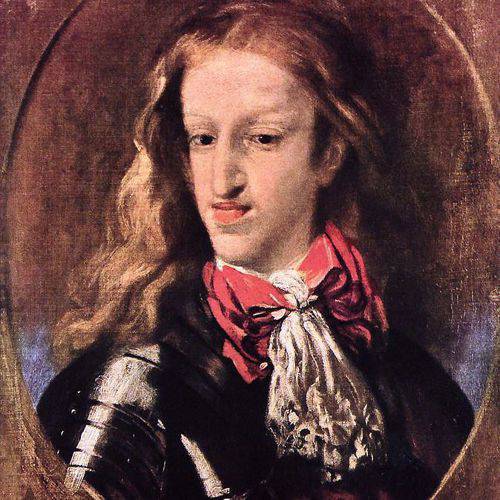
Being closely related to the extinct Spanish Habsburgs, the Austrian Hapsburgs had every reason to challenge the testament, appealing to the state of health of the deceased king and family ties. The Holy Roman Emperor Leopold I expressed deep concern about the ambitions of his brother Louis XIV. After all, if the combination of the Sun King successfully developed, France would become the owner of a colossal territorial possessions in both the Americas and Europe. After weighing the pros and cons, jealously watching the appetites of his longtime rival, the English government of Queen Anne also indicated extreme concern. Since these were times in which they still remembered the knight’s honor, it was literally considered mauvais ton to disregard such diplomatic demarches. To all appeals to “moderate imperial ambitions,” the official Louvre responded with full refinement notes, the essence of which, on closer examination, was reduced to “But you, gentlemen, would not look for truffles in the Bois de Boulogne forest!”
And then the word was given to the iron and copper diplomats, whose eloquence was measured by pounds of gunpowder and nuclei.
Long road to the throne
Two coalitions were quickly determined. The ambitions of Louis XIV were disputed by Austria and England. Soon the Netherlands, Portugal, Prussia, the Duchy of Savoy and a number of small “partners” decided to try their luck on the side of the offended. On the side of the "golden lilies", the coat of arms of the French Bourbons, Spain itself, a friendly Parisian Bavaria and several less significant allies, fought. The fighting took place at several theaters: in Flanders, Spain and Italy. The struggle went on in the colonies and at sea. Possessing the most powerful army in Europe at that time, strong fleet, France at first quite successfully fought back against opposing opponents. The problem was that it was the French troops that laid the brunt of the war in almost all directions. Depleted by the rule of the temporary workers under the demented Charles II, Spain was in an extremely distressed situation. She did not have a combat-ready army - there was no money for her, the once mighty fleet was dilapidated at the quays, the treasury was practically empty. The real military assistance was huge on the map, but the Spanish empire, which was essentially exhausted, could not render its ally. The forces of the remaining members of the French coalition were limited.
Gradually, military happiness began to leave Louis XIV. Affecting the dispersion of forces, internally increased tension. And most importantly, less and less was the main resource for waging the war, which almost a hundred years later was told by another famous Frenchman of Corsican origin - money. The Sun King led a very active foreign policy, and a lot of resources were spent on various strategic adventures and projects. In the midst of the latter in the reign of Louis and the biggest war, the French economy began to choke.
In Paris, they decided that the time had come to search for “ways out of the impasse” and began to probe the possibility of a “peaceful settlement”. However, the opposite side’s appetites were in no way inferior to the “kingdom of golden lilies”. Opponents of Louis demanded not only to clear all the territory occupied by his troops, to abandon the colonies in the West Indies, but also to send the army to Spain in order to drive out his grandson from there. It was too much. The old king rejected such humiliating conditions and decided to fight to the end. He appealed to the people, calling to stand under the royal banners for the "honor of France." Thousands of volunteers joined the army. Additional recruitment kits were organized. By the beginning of the company 1709, France was able to concentrate in Flanders, the main military theater more than 100 thousand people. Initially, the command of the army was decided to entrust the aged marshal Buffler, but he refused in favor of the younger in rank (that is, who received the title of Marshal of France after him) Duke Claude Louis Hector de Villar, the best at that time commander of the king.
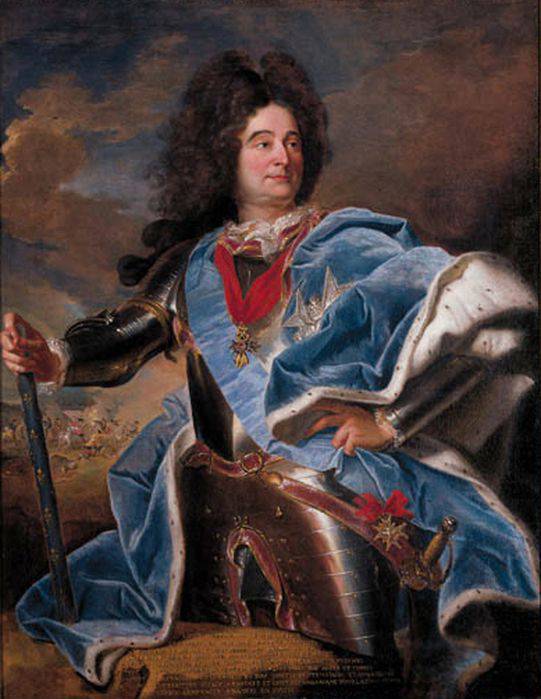
Prepare
The son of his time, Villars had many of the advantages and disadvantages of that era. Desperately brave, repeatedly personally leading the attacking troops, a talented strategist and tactician, the duke could, without a twinge of conscience, multiply the losses of the enemy in the report, he liked to boast about it and without. But who is not without sin? Anyway, the appointment of Villars to the commanders after his successful operations in the duchy of Savoy was received by the army with enthusiasm. Tidying up the order, pulling discipline, often by rigid methods, the duke began active actions.
He was opposed by the allied army under the command of no less famous commanders — Sir John Churchill, 1 of the Duke of Marlborough, and Prince Eugene of Savoy. These were the best commanders of the anti-French coalition. The Allies laid siege to the strategic importance of the fortress of Mons, the fall of which would open the way deep into France. The French command could not afford to drop this key position. Villars began to advance his troops to Mons.
However, 9 September, passing the town of Malplaquet (Malplaquet), at the exit from the defile between the Sarsk and Lanier forests, the French stumbled upon the position of the enemy. Intelligence reported to the Allies that Villars was approaching, so they occupied several villages on a possible route and followed them with artillery. In addition, the combined Anglo-Austrian army, reinforced by the Dutch and Prussian contingents, outnumbered the French. Villars sought to fight, and therefore decided to stand in close proximity to the Allies besieging Mons, threatening with his presence. Thus, he forced Marlborough and Eugene of Savoy to fight. In various sources there is a discrepancy why Villar was not attacked immediately. British historians claim that Marlboro was eager to fight, but representatives of the United Provinces Republic (or the Netherlands) asked him to wait for the approach of additional forces. Another version points to Prince Eugene of Savoy, who called for the Prussian detachment of General Lottum (infantry battalion 23) to wait.
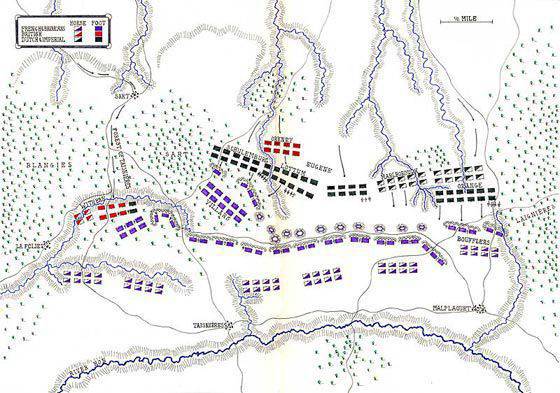
An important factor was the attack of the garrison itself Mons, encouraged by the approach of Villars. One way or another, but the allies, who were stuck in “briefings and discussions, gave Villar a full two days to arrange positions. Than talented French marshal did not fail to take advantage. The French army consisted of 120 infantry battalions, 260 cavalry squadrons and 80 guns with a total of up to 90 thousand people. During the pause, kindly presented to Villars by the Allies, the French equipped three lines of earthworks, reinforced with redoubts and abutments. Artillery swept all the space in front of the positions. Part of it was withdrawn to reserve. Fortifications occupied three line of infantry, one behind the other, behind which two lines housed the cavalry.
On the eve of the battle, the aged Marshal Buffler arrived at the camp, whose appearance even more inspired the troops. The old man did not grumble and teach Villar, but simply asked to participate in the case. The duke kindly ordered Buffler to command the troops of the right flank. Its core was the 18 battalion of the elite Bourbon, Piedmontese and Royal Brigades under the overall command of 68-year-old Lieutenant-General Pierre d'Artagnan-Montesquieu (cousin of the gray musketeers of the royal, that same d'Artagnan). The center was commanded by the Duke’s brother, Lieutenant General Armand de Villar. Immediately was the Guard. The left flank was given to the Marquis de Goesbriant. Enough infantry were left in reserve, whose combat capability was unquestionable: the Bavarian and Cologne Guards, the Irish Green (in the color of the uniforms) brigade, whose personnel was filled with hatred of the British, as well as other units. The cavalry was supposed to play the role of a mobile fire brigade. The best regiments — the Bavarian Carabinieri, the regiment of Rottenburg, the French “Maison du Roi” —the duke decided to save it for the very extreme case. Subsequently, it helped the French avoid a complete rout.
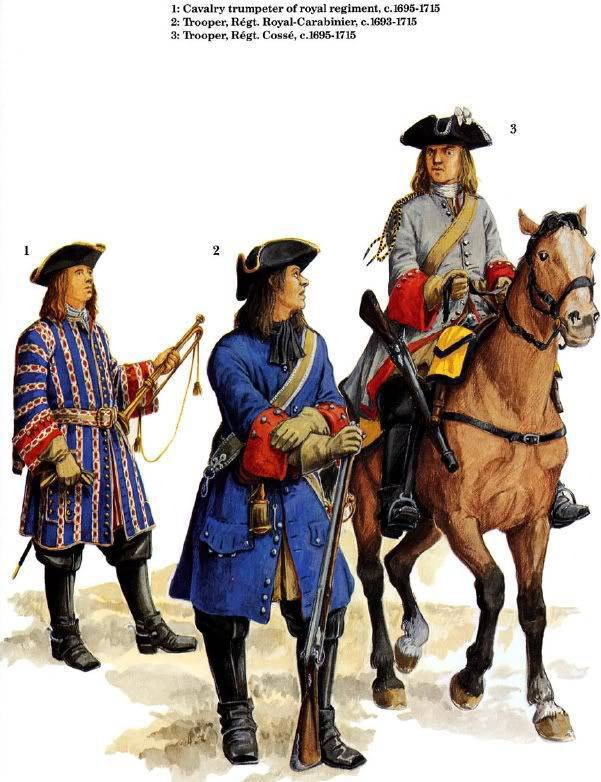
The number of troops of the allies different sources indicate differently, but in any case, they outnumbered the French in number. The most frequently cited figure is the 117 of a thousand men: 162 infantry battalion, 300 cavalry squadrons and 120 guns. The national composition was even more colorful than the French. These included the British, Imperial (Austrian), Dutch, Prussian, Danish, Hanover battalions and squadrons. Plus the contingents of small German states, which cannot be seen on the map either.
The general command was exercised by the Duke of Marlborough, "Corporal John," as the soldiers called him. He led the left flank, where he planned to deliver a decisive blow. The left flank, in the function of which was to act on the nerves of the French, diverting their attention from the mainstream, was commanded by the equally famous Evgeny of Savoy.
The Allies understood that they were in a well-equipped, tough position. It was decided, by causing distracting blows to the center and the right flank, in the meantime bypassing and crushing the left flank, overturning the French. Villars hoped that, relying on his redoubts with guns, he would be able to bleed and wear down the enemy, in order to try to counterattack later.
Bits
Both sides were preparing for battle. Both sides were waiting for him. In 3 hours of 11 September 1709, under the cover of thick fog, the troops of Marlborough and Eugene of Savoy began deploying to attack. Initial positions were taken. In 7 hours 15 minutes, when the fog finally cleared, the Allied artillery opened fire. Aiming was carried out approximately, so the effectiveness of the shelling of protected French positions was insignificant. After half an hour of burning gunpowder, the Allied column, consisting of 36 battalions under the command of the Saxon General Schulenburg, launched an attack around the enemy’s left flank. This first, test, attack was repelled by the concentrated fire of the French artillery, which used the canister intensively. Not brought progress and several repeated attacks.
Seeing the futility of attempts, Prince Eugene of Savoy gave the order to put forward additional batteries on a direct lead, the benefit of the number of Allied artillery allowed. The guns were supposed to clear the way for the attacking infantry. In response to requests for help, Villars also responds by reinforcing the left flank with parts from the reserve. The intensity of the cannonade is increasing. Frustrated by unsuccessful attempts to bypass the French flank, Prince Eugene concentrates more than 70 infantry battalions, and by noon Schulenburg and Lotum manage to finally bypass the left flank of the enemy. A large concentration of forces has played its role. Four French brigades, already exsanguinated by a long defense, were forced to abandon their positions and withdraw.
Villars, who received a report on the pressure on the left flank, reacted dynamically and quickly. It was clear that we are talking about the integrity of the entire defensive line. The infantry is being deployed from the reserve to the threatening area, battalions are removed from less dangerous directions. The duke himself came here to personally lead the battle. The Irish Brigade led the counterattack, whose battle impulse was increased by the realization that it was the British that were in front of them. The attack of the infantry on the Allied attacking columns was supplemented by the onslaught of the guards cavalry, and the positions were returned, the British overturned. It was one of the key moments of the battle. Marlborough and Prince Eugene hurried the orderlies asking for help, that the French fire was too marked and strong, and the positions were strengthened.
However, as often happened in the world stories and before and after that, the crazy shard of the nucleus made adjustments to historical reality. Duke Villars was wounded in the leg, he was forced to endure into the depths of the ranks. The French attack choked and did not get a sequel. The command was taken over by Marshal Buffler, who began to promptly return troops that had participated in the counterattack to their previous positions — no matter how cool, but the superiority of the allies in numbers affected. Evgeny of Savoy, seeing that the center of the enemy was weakened, transferred pressure to him. No less than the 15 battalions of the British infantry became the spade that was driven into the gap between the center and the left flank of the French. The gap under the influence of artillery expanded. The units holding the defense were overturned and forced to retreat. Prince Eugene immediately took advantage of this and placed in this place an artillery battery, which began to smash the positions of the French army with longitudinal fire.
The Duke of Marlborough, meanwhile, tirelessly attacked the right flank. General d'Artagnan-Montesquieu, under which three horses were killed, with true Gascon courage and bravery, fought with almost three times the superior forces of the enemy. The old general waved away from the insistent requests of the staff officers to take care of themselves and step back from the front line at the expense of the “new fashion for wigs tousled by bullets”. The columns of the Dutch, attacking under the command of the Prince of Orange, were swept away by the French with volleys of canister at close range. The mountains of corpses piled up in front of the redoubts of the cousin captain of the Musketeers. But the overall situation began to lean in favor of the Allies. The French line trembled. Eugene of Savoy prepared forces for the final attack, which according to his plan was to decide the outcome of the battle. Concentrating fresh squadrons of heavy cavalry, as the point of a spear, the prince ordered the attack.
The most dramatic moment of the battle came. Initially, the French managed to somehow hold back the onslaught of such a mass of cavalry, but the outcome was decided by a column of Major General George Douglas-Hamilton, Earl of Orkney 1 in the 15 infantry battalions, transferred to Marlborough at the request of Evgeny of Savoy. Having suffered huge losses, she first burst into the depths of the French center, already weakened by continuous attacks and artillery fire. Allied cavalry poured into the resulting breakthrough. In this situation, Marshal Buffler was forced to order the retreat. Hiding behind the counterattacks of the heavy Guards cavalry, prudently guarded by Villars for the most extreme case, the French army retreated in relative order, snapping and without panic. Having suffered great losses, the Allies pursued them sluggishly and without enthusiasm.
By the evening the massacre, which lasted all day, was over. The battlefield left for the allies. The battle of Malplak went down in history as the largest battle of the 18th century, where more than 200 thousand people participated on both sides with the support of almost 200 guns. The losses of the allies were simply enormous - numerous frontal attacks in the forehead of the French fortifications cost the Duke of Marlborough and Prince Eugene of Savoy, according to various estimates, from 25 to 30 thousands of people. Losses of the French are estimated at half as much: 12-14 thousand.
After battle
Formally, the tactical victory went to the allies. They managed to force the French to retreat, leaving the position. Mons Fortress a month later, without capturing the assault. However, a closer look at the outcome of the battle reveals a slightly different situation. The French army was not defeated. She retained all her artillery - all 16 guns were lost. The enemy was drained of blood and suppressed by casualties and refused to advance into the depths of France. The wounded Villars was filled with optimism. In a letter to Louis XIV, he cheerfully minted: "Do not worry, sir, a few more such defeats, and your enemies will be destroyed."
The battle of Malplak was the last battle of the Duke of Marlborough. "Brave Corporal John" was recalled to England. It happened under very curious circumstances. Sarah Churchill, Duke's wife, was Queen Anne's confidante. She was also the spokeswoman of the Tory party, which stood for the war to the bitter end. It so happened that the queen ordered fashion gloves from a famous moderator. Her friend, Duchess Churchill, not wanting to give in, ordered exactly the same. In an effort to be the first to get the desired detail of the toilet, the duchess constantly urged on the moderator, who was forced to complain through the mediation of fellow maids of honor to the queen. She, having learned about her friend's tricks, became enraged. Sarah Churchill remained Anna's confidante, but from that moment the star of the Duchess began to grow dimly. The Duke of Marlborough was recalled from the continent, and the Whig party, defending the idea of "constructive dialogue with France", took up at court.
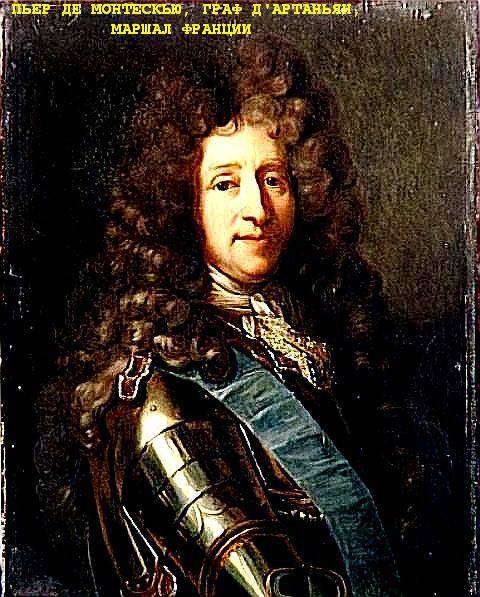
The valor of Malplak was brought by the long-awaited marshal's baton to Pierre d'Artagnan, who has since called himself only as Montesquieu in order to avoid confusion with the illustrious cousin. Recovered after being wounded, Duke Villars re-became head of the French army so that in the 1712 year, personally leading the attacking troops, utterly defeat Yevgeny of Savoy at the battle of Denin.
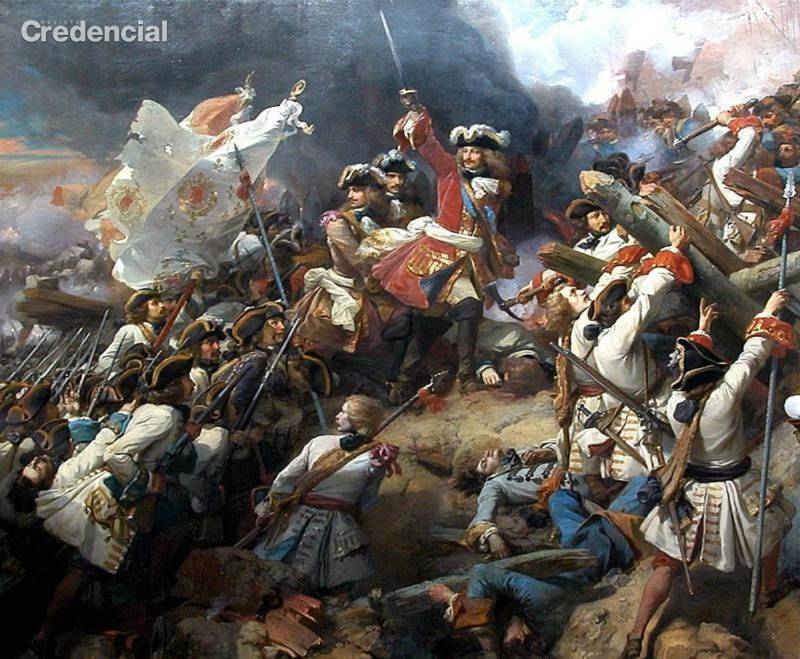
This brought Louis XIV extra points during the peace negotiations that ended with the signing of the Peace of Utrecht, which ended this long and bloody war. The grandson of Louis XIV remained on the Spanish throne, but refused to claim the throne French. So a new royal dynasty of the Spanish Bourbons appeared. Centuries passed, the winds of revolution swept away the French monarchy, became the history of the 1 and 2 of the Empire, a series of republics passed, and in Madrid King Philip VI of the Bourbon dynasty, whose ancestors received the right to the throne in many ways on blood-stained fields small town Malplake.
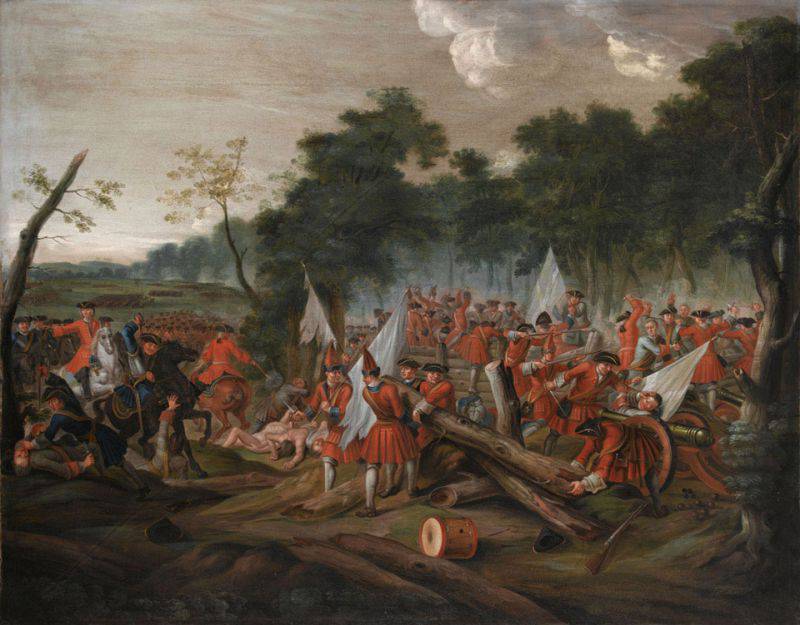
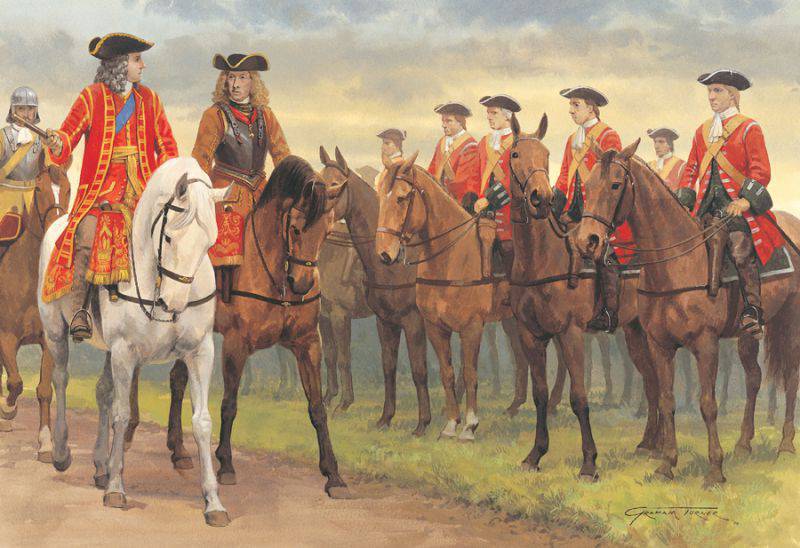
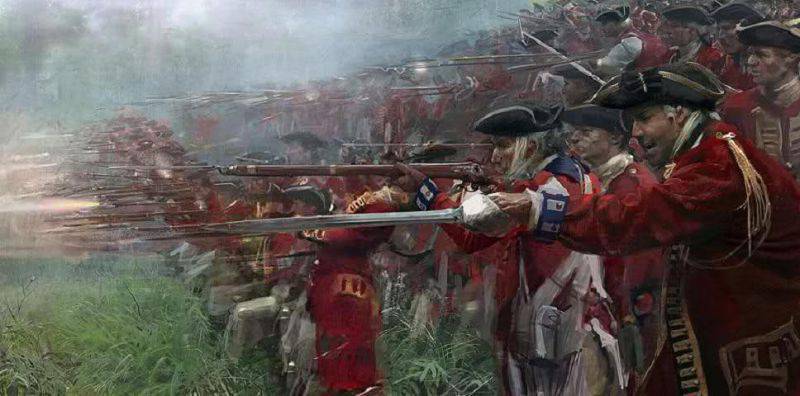
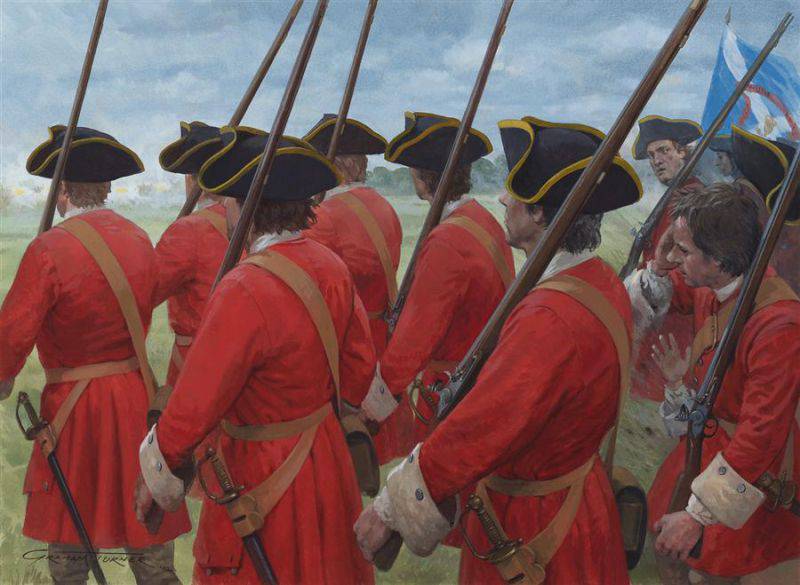
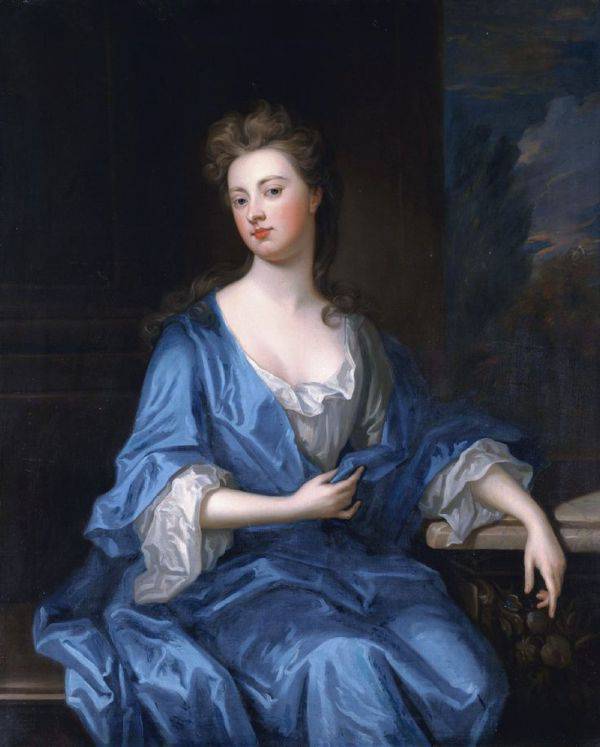
Information